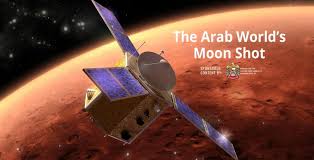
Breaking News
 Interview 1993 – Iain Davis Exposes the Technocratic Dark State
Interview 1993 – Iain Davis Exposes the Technocratic Dark State
 Get Ready! Something Big is Coming and They're Putting all The Pieces in Place | Redacted News
Get Ready! Something Big is Coming and They're Putting all The Pieces in Place | Redacted News
 Here we go! This is about to get very UGLY
Here we go! This is about to get very UGLY
We Americans Need to Dig Deep into Historical Perspective
Top Tech News
 This tiny dev board is packed with features for ambitious makers
This tiny dev board is packed with features for ambitious makers
 Scientists Discover Gel to Regrow Tooth Enamel
Scientists Discover Gel to Regrow Tooth Enamel
 Vitamin C and Dandelion Root Killing Cancer Cells -- as Former CDC Director Calls for COVID-19...
Vitamin C and Dandelion Root Killing Cancer Cells -- as Former CDC Director Calls for COVID-19...
 Galactic Brain: US firm plans space-based data centers, power grid to challenge China
Galactic Brain: US firm plans space-based data centers, power grid to challenge China
 A microbial cleanup for glyphosate just earned a patent. Here's why that matters
A microbial cleanup for glyphosate just earned a patent. Here's why that matters
 Japan Breaks Internet Speed Record with 5 Million Times Faster Data Transfer
Japan Breaks Internet Speed Record with 5 Million Times Faster Data Transfer
 Advanced Propulsion Resources Part 1 of 2
Advanced Propulsion Resources Part 1 of 2
 PulsarFusion a forward-thinking UK aerospace company, is pushing the boundaries of space travel...
PulsarFusion a forward-thinking UK aerospace company, is pushing the boundaries of space travel...
 Dinky little laser box throws big-screen entertainment from inches away
Dinky little laser box throws big-screen entertainment from inches away
 'World's first' sodium-ion flashlight shines bright even at -40 ºF
'World's first' sodium-ion flashlight shines bright even at -40 ºF
The UAE's first interplanetary mission to Mars set for launch

This summer, the United Arab Emirates aims to join the ranks of just a handful of elite space-faring countries around the world by launching its first interplanetary mission to Mars. For the last six years, the small Middle Eastern country has worked tirelessly to build a spacecraft that can orbit the Red Planet to study its atmosphere and weather. Now, the mission is set to launch on top of a Japanese rocket.
Know as the Emirates Mars Mission, the project will kickstart a busy summer of missions to Mars. Following this launch, China also plans to launch an orbiter, rover, and lander to the Red Planet on July 23rd. Shortly after that, on July 30th, NASA is set to launch its next rover to Mars, called Perseverance. All of these missions are trying to get off the ground during a very small window this summer when Earth and Mars come closest to one another on their orbits around the Sun. This planetary alignment only happens once every two years, so if any of these missions can't launch this summer, they'll have to wait until 2022 to try again.



